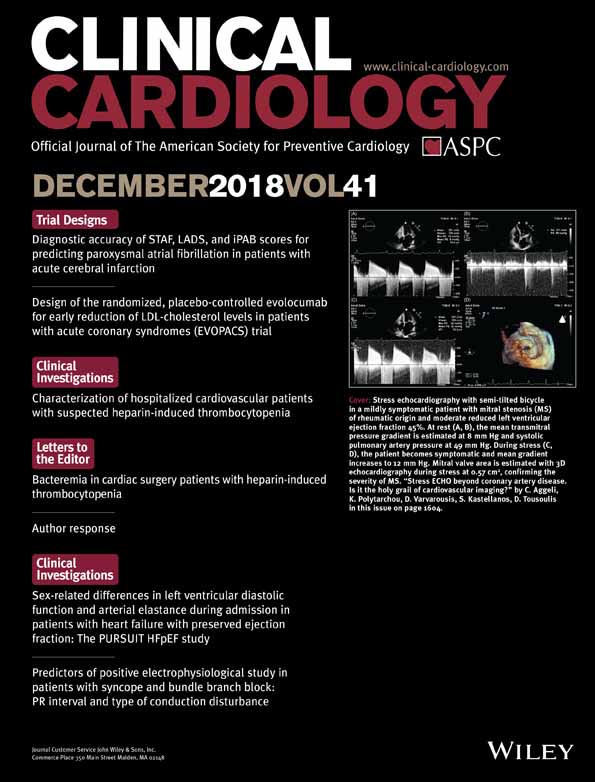Sex-related differences in left ventricular diastolic function and arterial elastance during admission in patients with heart failure with preserved ejection fraction: The PURSUIT HFpEF study
Abstract
Background
We previously reported that an index of afterload-related left ventricular diastolic function, operant diastolic elastance (Ed)/effective arterial elastance (Ea) = E/e’/(0.9 × systolic blood pressure), was significantly higher in elderly hypertensive women. We aimed to determine sex-related differences in the E/e’-related indices for left ventricular diastolic function and their related factors during admission in patients with heart failure with preserved ejection fraction (HFpEF).
Hypothesis
Elderly HFpEF women exhibit severe left ventricular diastolic dysfunction associated with different left atrioventricular volume ratio.
Methods
We divided 267 patients with HFpEF (men/women, 116/151) into two groups by age (≥75 years, n = 212; <75 years, n = 55). We examined the alterations of E/e’, E/e’/stroke volume index = Ed, and Ed/Ea, and cardiac structure during admission.
Results
Ed and Ea were significantly higher in women than in men, at admission, especially in patients ≥75 years. Before discharge, not only Ed and Ea but also Ed/Ea was significantly higher in women than in men, especially in patients ≥75 years. Elderly female patients had larger left atrial than left ventricular volume.
Conclusions
Higher afterload-related left ventricular diastolic elastance, Ed/Ea, in association with higher arterial elastance, Ea, accompanied by left atrioventricular volume mismatch was observed in elderly HFpEF women.
CONFLICTS OF INTEREST
The authors declare no potential conflict of interests.




